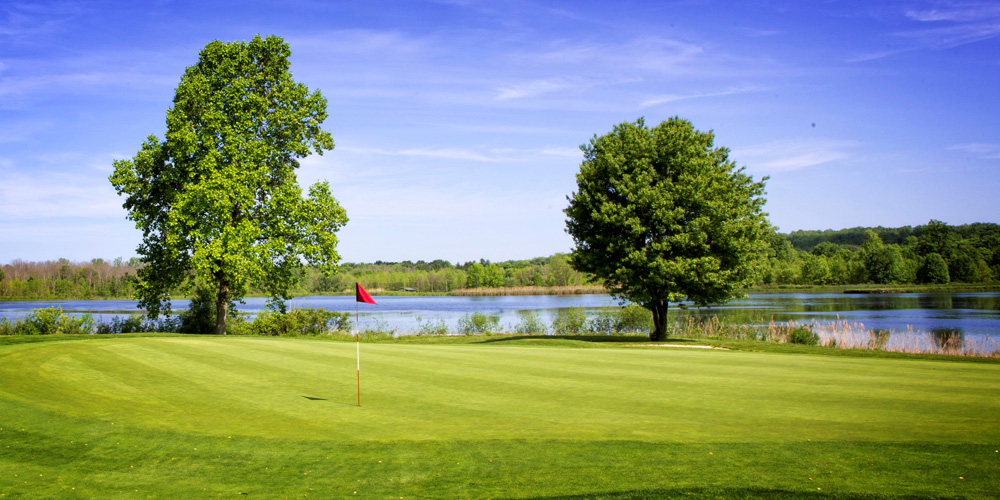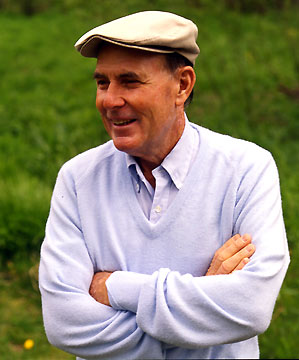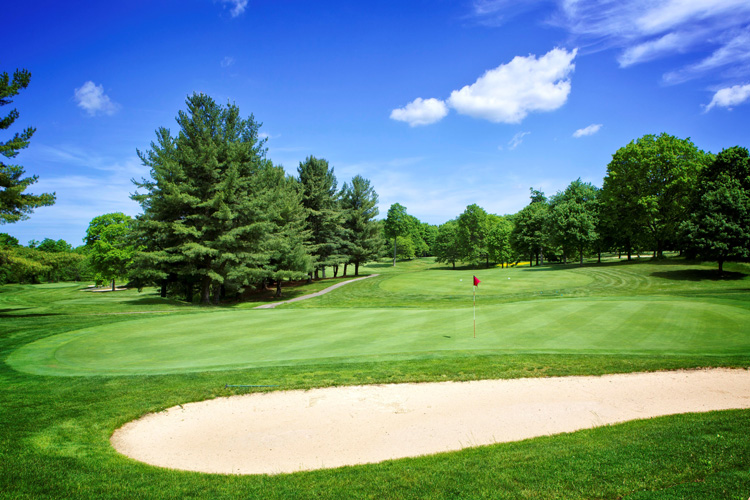Recently, I took a road trip combining my life-long likes for good public golf courses and baseball. Specifically, a fellow baseball fan (of our beloved Cleveland Indians) and good friend and I traveled to Cleveland to take in a day game against the Boston Red Sox and followed it up the next day with a round at Fowler’s Mill Golf Course in the nearby suburb of Chesterland, OH.
I was intrigued with Fowler’s Mill for two main reasons: 1) Its high ranking by Golf Digest as a public golf course; and 2) Its co-designer (with his brother Roy) was Pete Dye, the legendary designer and member of the World Golf Hall of Fame.
The story of how Fowler’s Mill retained Dye early in his acclaimed career is interesting. The land was originally developed by the TRW company known in the late ‘60s for name plate properties such as the NCR Club in Dayton and Firestone GC in Akron. Fifteen hundred acres of land were originally acquired with the goal of 54 championship holes. That dream was eventually curtailed to 27 holes but over an equally spacious 800 acres. Most 18-hole golf courses comprise less than 200 acres.
After Pete drew acclaim and attention for such tracks at Crooked Stick in Indiana, The Golf Club in Ohio, Harbor Town in South Carolina and Radrick Farms in Michigan, he and his younger brother were selected by TRW.
Let me say the slogan used on the course’s scorecard and website of a “Pete Dye Masterpiece” is a stretch. And that’s not to discredit either the golf course or the noted architect. It’s just that at this point in Dye’s illustrious career, his full maturity as a genius designer and earth-shaper had not yet developed. But throughout the course, there are unmistakeable signs of Dye’s intelligence and lasting strength as a designer. So for this reason and others Dye aficionados and golf history buffs should make a pilgrimage to Fowler’s Mill. You won’t be disappointed.
My friend (Dale, a former resident of Cleveland) and I both agreed that the course conditions, especially the greens, were top-notch and exemplary. Unlike many public courses, one could truly roll the ball on the slick and often undulating putting surfaces. Likewise the fairways were well-groomed and maintained. We also favorably remarked on the quality of the bunkers and the ample and quality sand found within. Again, too many public courses seem to skimp on bunker conditions and it was gratifying to see the standard maintained at Fowler’s Mill.
As noted earlier, there are definitely some Dye trademarks found here. I particularly relished the split fairways found on holes no. 9 and no. 12. Both holes presented risk-reward choices from the tee which later became a common Dye stratagem. For example, on the par-four 9th hole, I opted for the smaller landing area on the left side of the dual fairway divided by a creek. This afforded a much shorter approach to the green without having to carry the creek near the green. Meanwhile my friend opted for the shorter route to the left which left him with a longer and riskier approach shot. It’s a testament to Dye’s skill as a designer.
Other Dye trademarks are the wooden bridges and signature railroad ties found around the course. I did find the par-fives somewhat of a question mark. All of them rely on a serpentine and winding design which becomes one-dimensional and too much of the same. I would prefer one or two of them to offer a different and straighter look. It made me wonder if the original tree lines and fairway corridors were wider when it opened in 1972. Possibly over time and without a thoughtful tree trimming and clearing regimen, Dye’s original intent was altered.
But this may be nitpicking. All in all, Fowler’s Mill is a veritable walk in a huge park without any outside distractions like a wedged in housing development. Inside a leafy and woodsy setting, one will find a large lake, creeks and a river on the property. Kudos to American Golf Corp. and CLEGolf properties for managing and preserving wildlife through the Audubon Society of New York. In fact, Fowler’s Mill was the first course in Ohio to earn the Certified Cooperative Sanctuary designation—promoting harmony with the environment—by the Society.
To my delight, a beautiful blue heron flew up and out of a riverbed as I crossed the bridge on the 10th hole. Fittingly, the heron is a chosen symbol on the scorecard and tee signs.
A few words about the third nine—Maple—at Fowler’s Mill. Due to time restraints we weren’t able to squeeze it in. But we did talk to one couple just off the course who raved about it and spoke very highly of the greens. Carl, the friendly and informative club house manager, insisted it’s the “best kept golf secret” in the Cleveland area.
Finally, the name of the course pays homage to Milo Fowler (no relation to Ricky!) an early gristmill owner and the original settler. Although certainly not a golfer, Milo would be quite pleased with what became of his homestead.
For more information, visit www.fowlersmillgc.com
Note: Terry Moore grew up in Youngstown, OH where he played golf and caddied as a pre-teen at the 36-hole Mill Creek Park Golf Course, a public course designed by Donald Ross. He remains a fan of the Cleveland Indians, the Browns and Ross.



